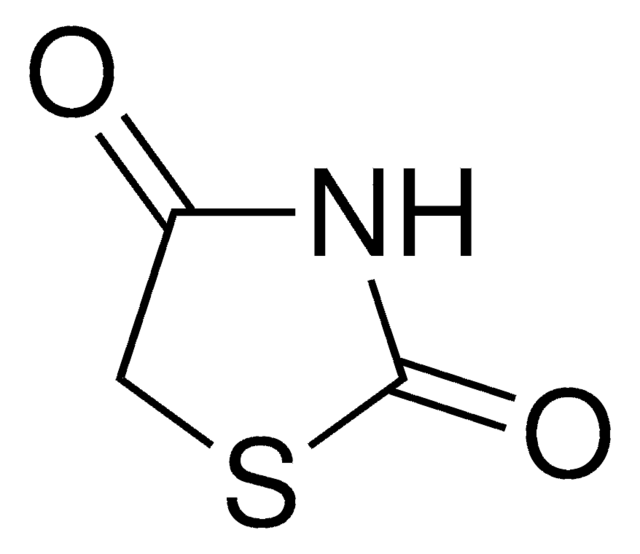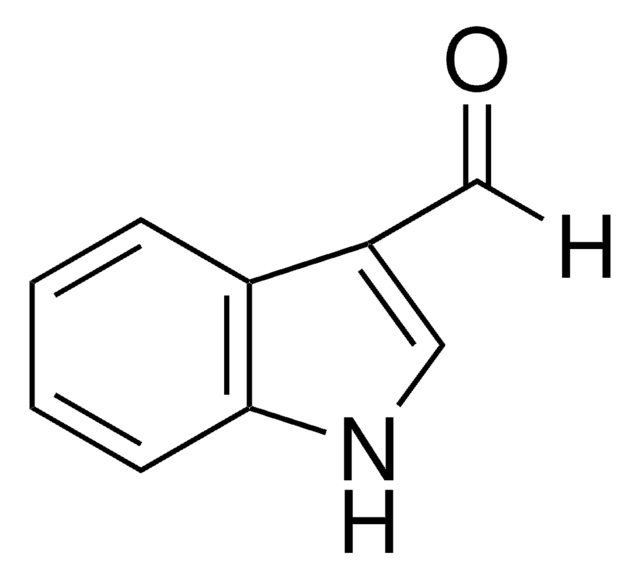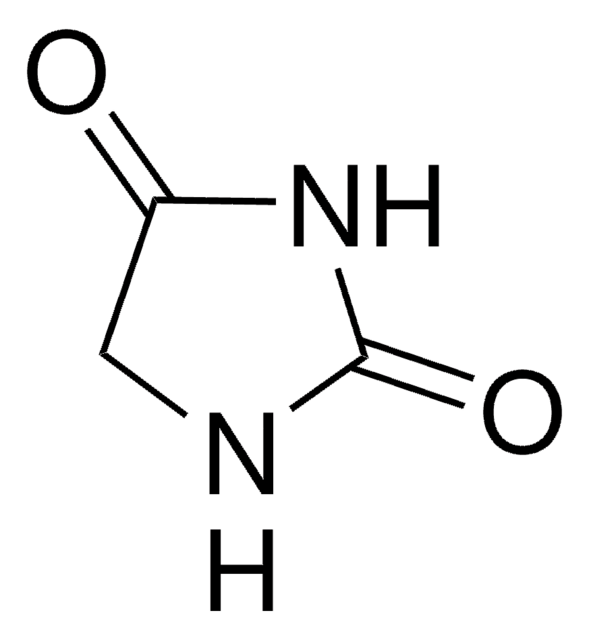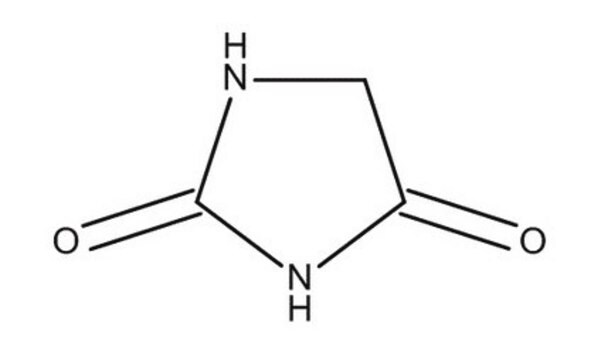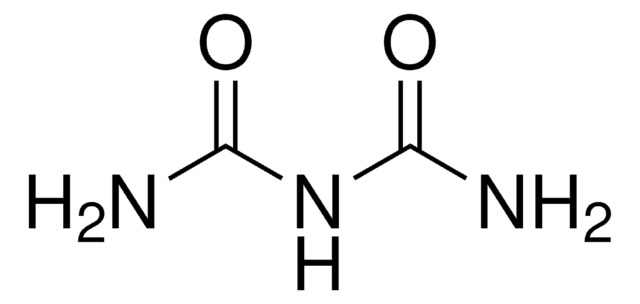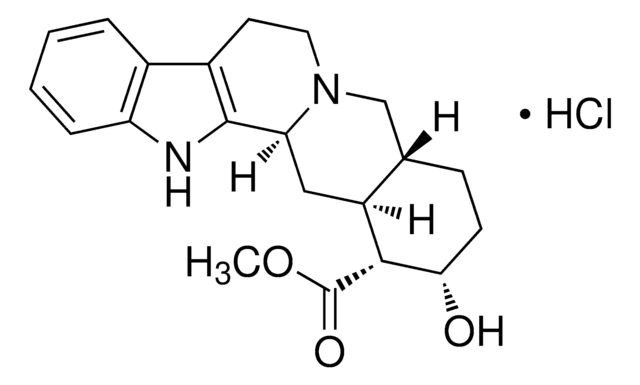Alle Fotos(1)
Wichtige Dokumente
T30406
2-Thiohydantoin
99%
Synonym(e):
2-Thioxo-4-imidazolidinone, NSC 11772
Anmeldenzur Ansicht organisationsspezifischer und vertraglich vereinbarter Preise
Alle Fotos(1)
About This Item
Empirische Formel (Hill-System):
C3H4N2OS
CAS-Nummer:
Molekulargewicht:
116.14
EG-Nummer:
MDL-Nummer:
UNSPSC-Code:
12352100
PubChem Substanz-ID:
NACRES:
NA.22
Empfohlene Produkte
Dampfdichte
4 (vs air)
Assay
99%
mp (Schmelzpunkt)
229-231 °C (dec.) (lit.)
SMILES String
O=C1CNC(=S)N1
InChI
1S/C3H4N2OS/c6-2-1-4-3(7)5-2/h1H2,(H2,4,5,6,7)
InChIKey
UGWULZWUXSCWPX-UHFFFAOYSA-N
Anwendung
Reactant for synthesis of:
Reactant for persilylation
- Drugs with antidiabetic activity
- Barbituric acid and thiohydantoin derivatives with antimicrobial activity
- Possible anticancer agents
- Fibroblast growth factor receptor 1 kinase inhibitors
- HIV-1 integrase inhibitors
Reactant for persilylation
Signalwort
Warning
H-Sätze
Gefahreneinstufungen
Acute Tox. 4 Oral
Lagerklassenschlüssel
11 - Combustible Solids
WGK
WGK 3
Flammpunkt (°F)
Not applicable
Flammpunkt (°C)
Not applicable
Persönliche Schutzausrüstung
dust mask type N95 (US), Eyeshields, Faceshields, Gloves
Hier finden Sie alle aktuellen Versionen:
Besitzen Sie dieses Produkt bereits?
In der Dokumentenbibliothek finden Sie die Dokumentation zu den Produkten, die Sie kürzlich erworben haben.
Shruti Beharry et al.
Journal of ethnopharmacology, 211, 126-170 (2017-08-16)
Maca - Lepidium meyenii Walp. has been cultivated and used by Andean people for over 1300-2000 years in Peru as food and medicine. Starting in the late 1990's it has developed into an important herbal medicine in China and is
Klaus Abraham et al.
Archives of toxicology, 93(2), 331-340 (2018-12-12)
Fatty acid esters of glycidol (glycidyl esters) are heat-induced food contaminants predominantly formed during industrial deodorization of vegetable oils and fats. After consumption, the esters are digested in the gastrointestinal tract, leading to a systemic exposure to the reactive epoxide
Unser Team von Wissenschaftlern verfügt über Erfahrung in allen Forschungsbereichen einschließlich Life Science, Materialwissenschaften, chemischer Synthese, Chromatographie, Analytik und vielen mehr..
Setzen Sie sich mit dem technischen Dienst in Verbindung.